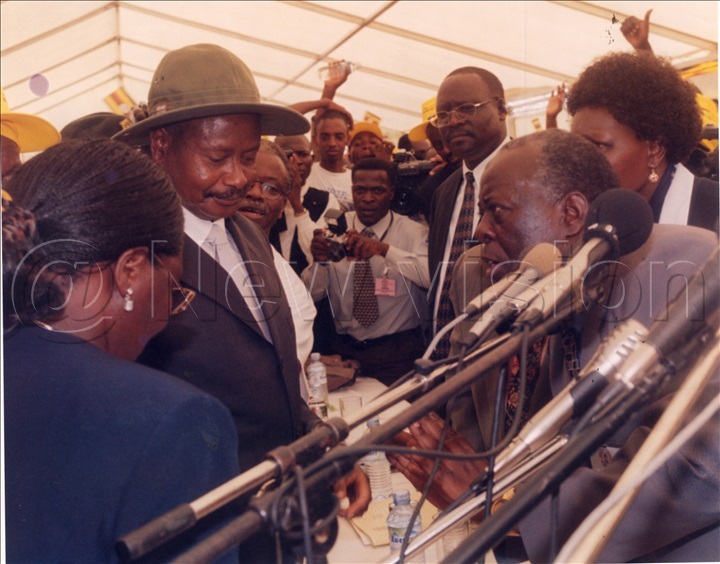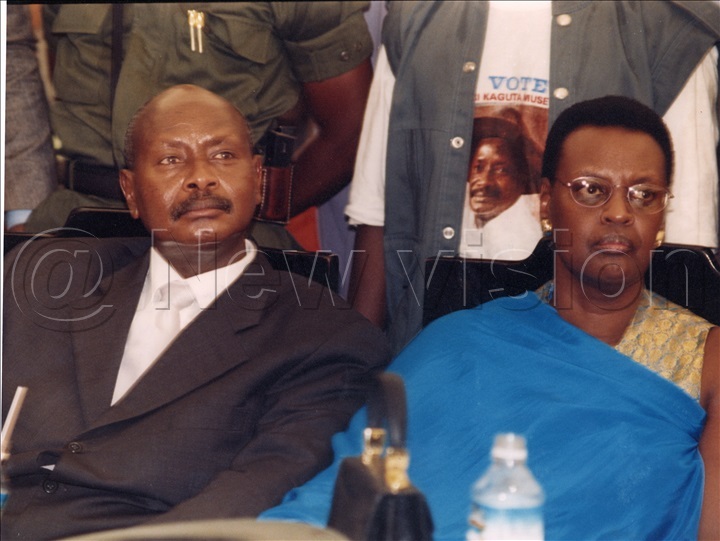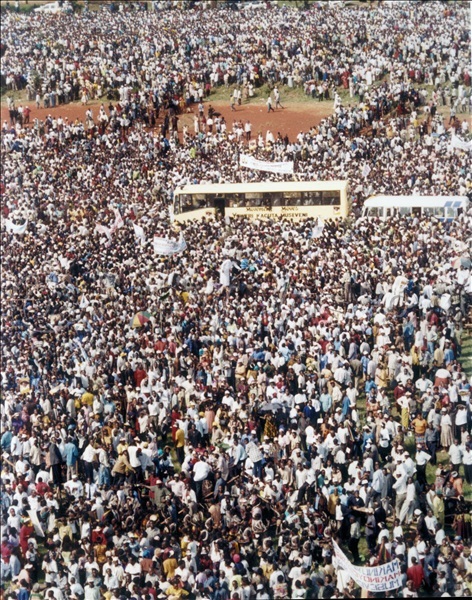NOMINATIONS IN 2001: Who is candidate Yoweri Kaguta Museveni
As the country gears up for presidential nominations on Monday November 2, 2020, we take you on a trip down memory lane. Here is a profile of candidate Yoweri Kaguta Museveni that was published back in 2001.
POLITICS | NOMINATIONS
Yoweri Kaguta Museveni was born in 1944 at Nyamambo village in Ntungamo district, as the Second World War came to a close. His parents, Amos Kaguta and Esteeri Kokundeka, sent him to Kyamate primary school in 1953.
Rejoined Mbarara High School in 1959 and changed to Ntare High school the next year until he finished secondary school. He joined the University of Dar es Salaam in 1967 and graduated in 1970 with a Bachelor of Arts Degree. He studied political science and economics.
In 1967, he was elected chairman of the University Students African Revolutionary Front (USARF) at Dar University. USARF was identified closely with the African liberation movements.

He worked briefly in the President's Office in Uganda as a researcher but went into exile when Amin took power in 1971.
He formed the Front for National Salvation (FRONASA) which together with other liberation groups backed by the Tanzanian army, toppled Idi Amin.
After the fall of Amin, iii 1979, Museveni served as Minister of Defence, Minister of Regional Cooperation as well as Vice chairman of the Military Commission.

He formed the Uganda Patriotic Movement (UPM) that contested in the controversial 1980 elections.
On February 6, 1981, Museveni went to the bush with 27 men. He formed the National Resistance Army (NRA) that five years later defeated the Obote and Tito Okello armies.
On January 26, 1986, he took over power, becoming president in an interim administration governed by the National Resistance Council (NRC).
In 1996 he was elected as the first president under the new 1995 Constitution. He seeks a second term.
His tenure of office has witnessed a return to law and order in the country. Armed forces are under control and peace prevails.
He restored the Buganda kingdom and other traditional rulers. The Lubiri and Republic house in Mengo were given back to the Kabaka
He was also instrumental in the return of Asian properties. In the same breath, he invited investors bringing foreign investments to the economy.
Steady economic growth has enabled a booming construction industry, taming of inflation and increasing inflow of external funds. Collection of taxes has grown.

The introduction of Universal Primary Education (UPE) increased enrollment from 2.6 million in 1996 to 6.8 million in 2000.
Marginalised persons now have a voice. The women, disabled, youth and workers now have representatives at all levels.
He is accused by critics of liberalising the economy, rapid privatisation as well as divesting Government from commerce and industry.
Museveni's promises:
Consolidating the work of building a professional arm
Consolidating gains in the economy, in infrastructure, reconstruction and modernisation
Consolidating gains in democratisation
Putting in place mechanisms for an orderly succession
Creating a vibrant regional market and penetrating the global market under the World Trade Organisation
Consolidating the success in economic management
Rehabilitating and expanding infrastructure
Deal with lingering insurgency and terrorism
Increasing revenue collection
Building capacity to fight corruption by equipping the CID and improving the investigative capacity
Introduce investigative courses and develop curricula for police and the judiciary to combat corruption
Set up tribunals at the sub county to combat corruption
Seek broad markets for our agricultural and industrial products
Guide the peasants towards commercially viable and modern agricultural production.
Continue to attract investment. (Between 1991-2000, the Uganda Investment Authority licensed 2,171 new enterprises worth US$4.761 bullion.)
Create more jobs through strategic intervention in areas such as textiles, leather works, mineral extraction and commercial farming.
This profile was originally writen by Patrick Luganda and published in The New Vision Wednesday, January 10, 2001
Read related stories here https://bit.ly/3kMea5V and https://bit.ly/3jMbsfz | #VisionUpdates | #UgandaDecides2021